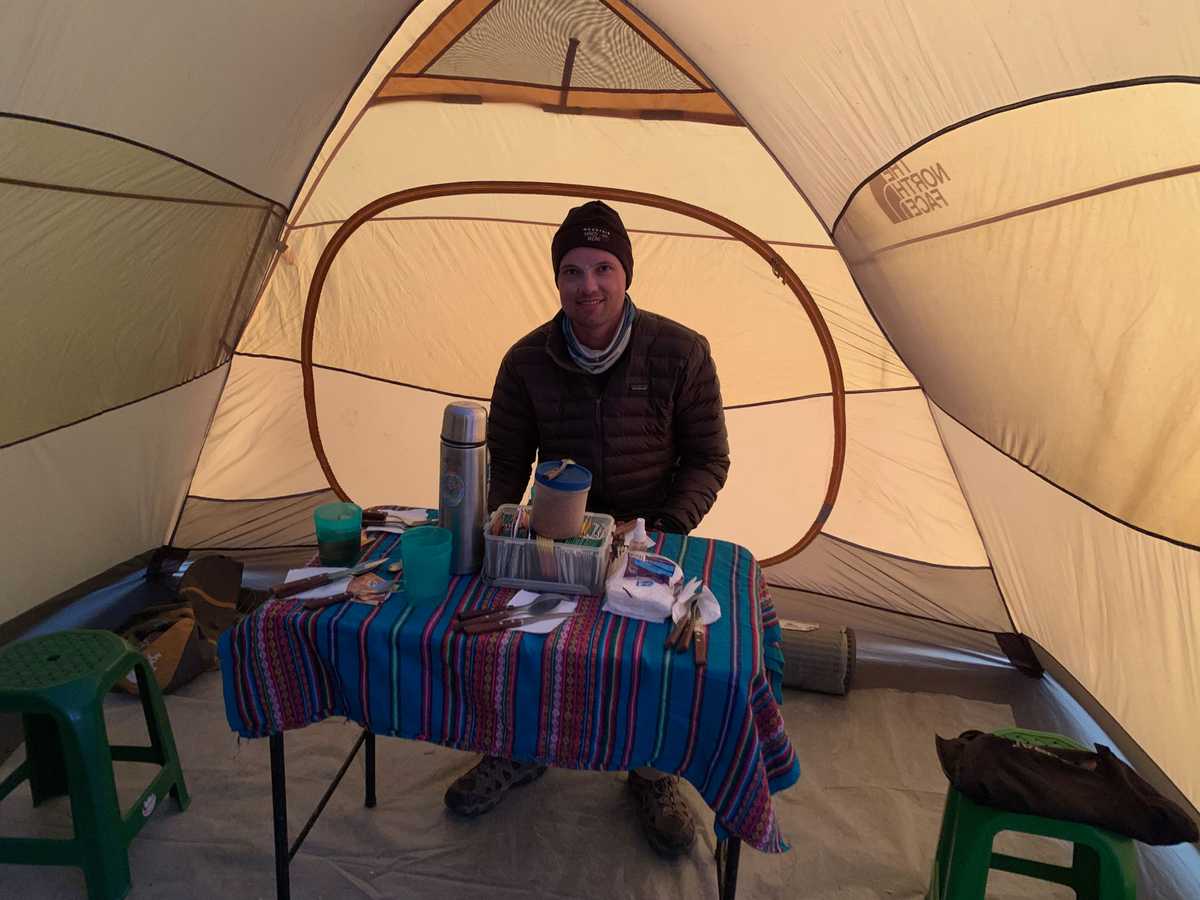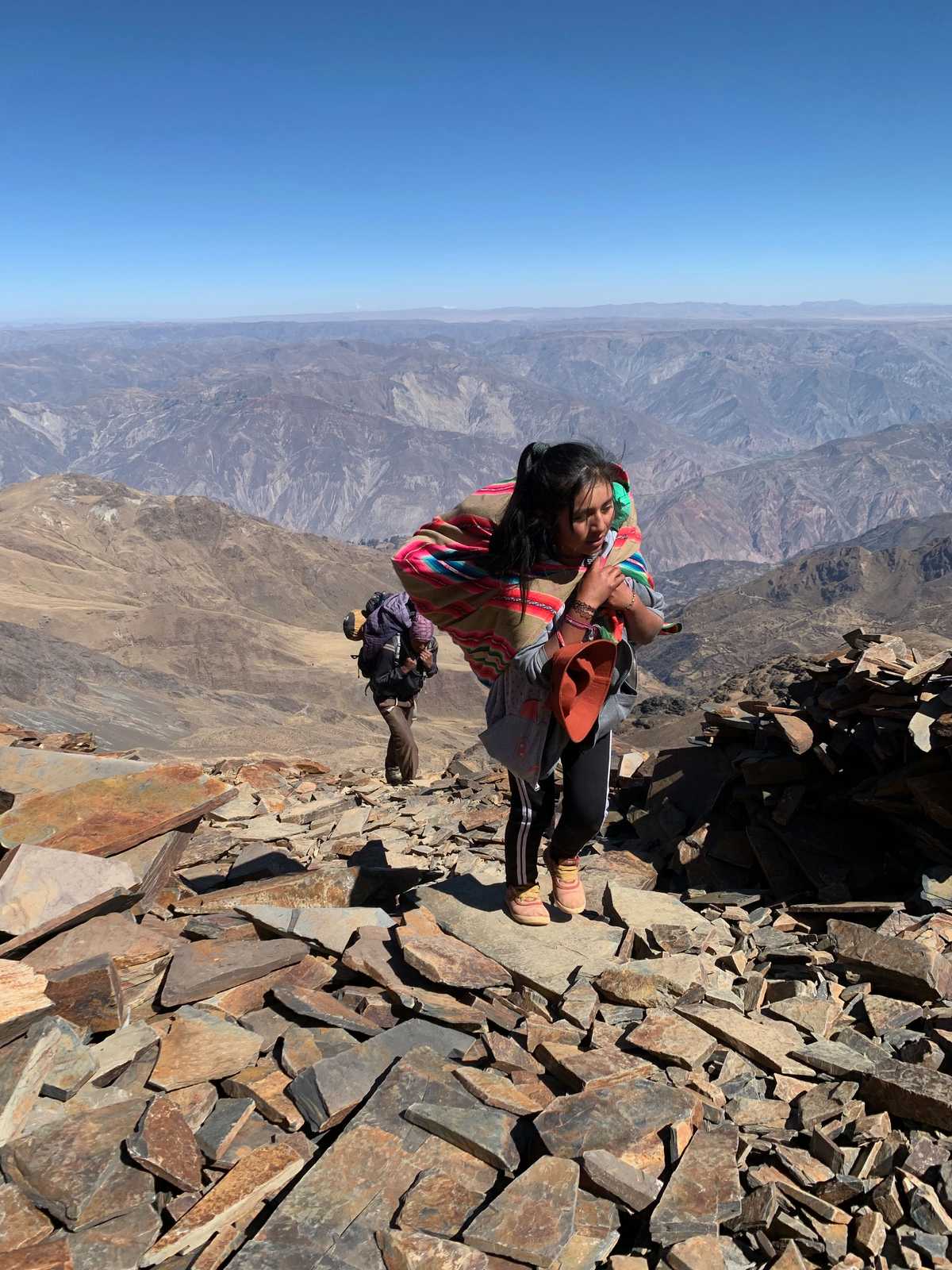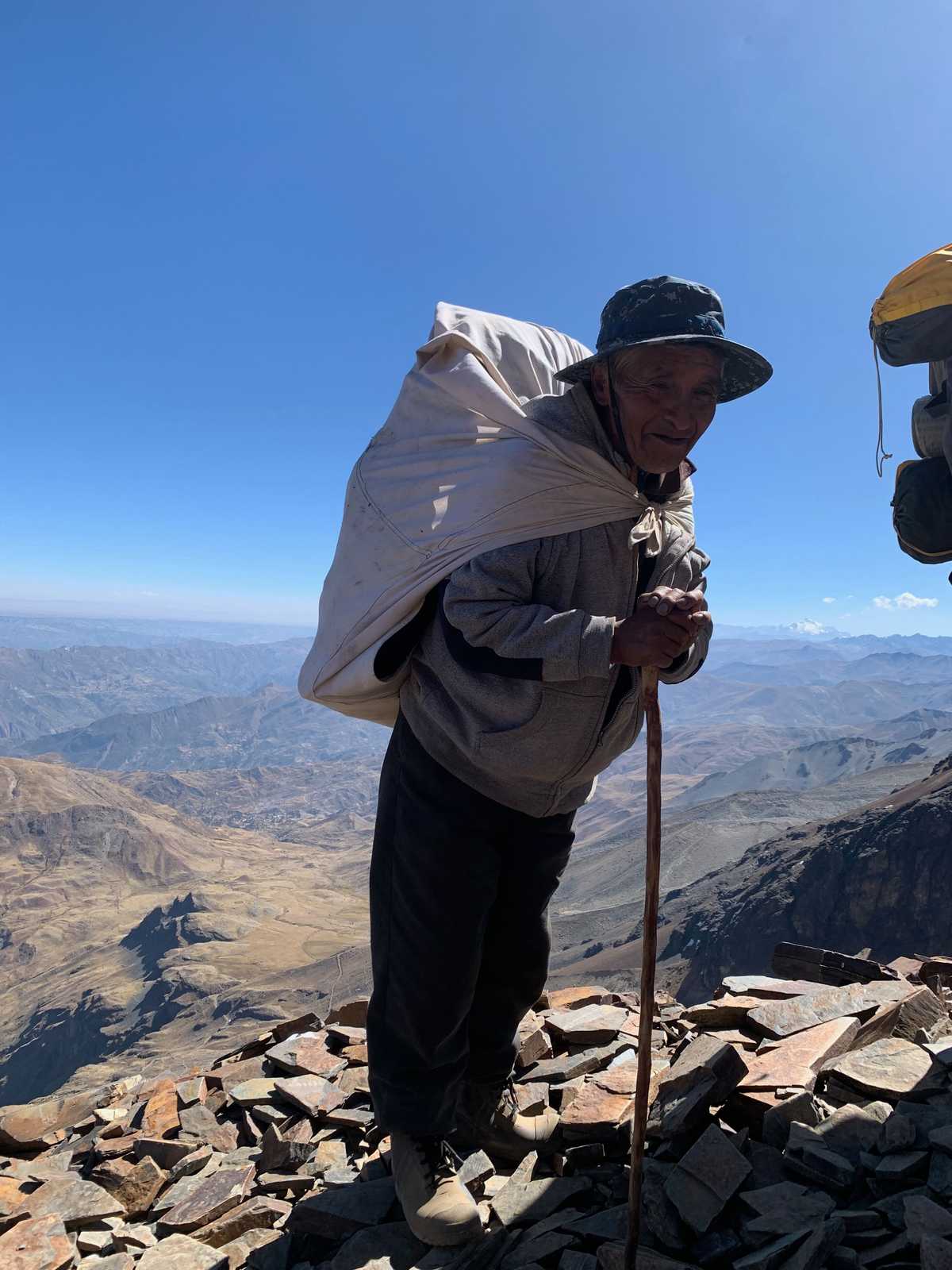In June of 2022, two friends and I set out to climb Illimani, the iconic 6,438m (21,122 ft) mountain near La Paz, Bolivia.
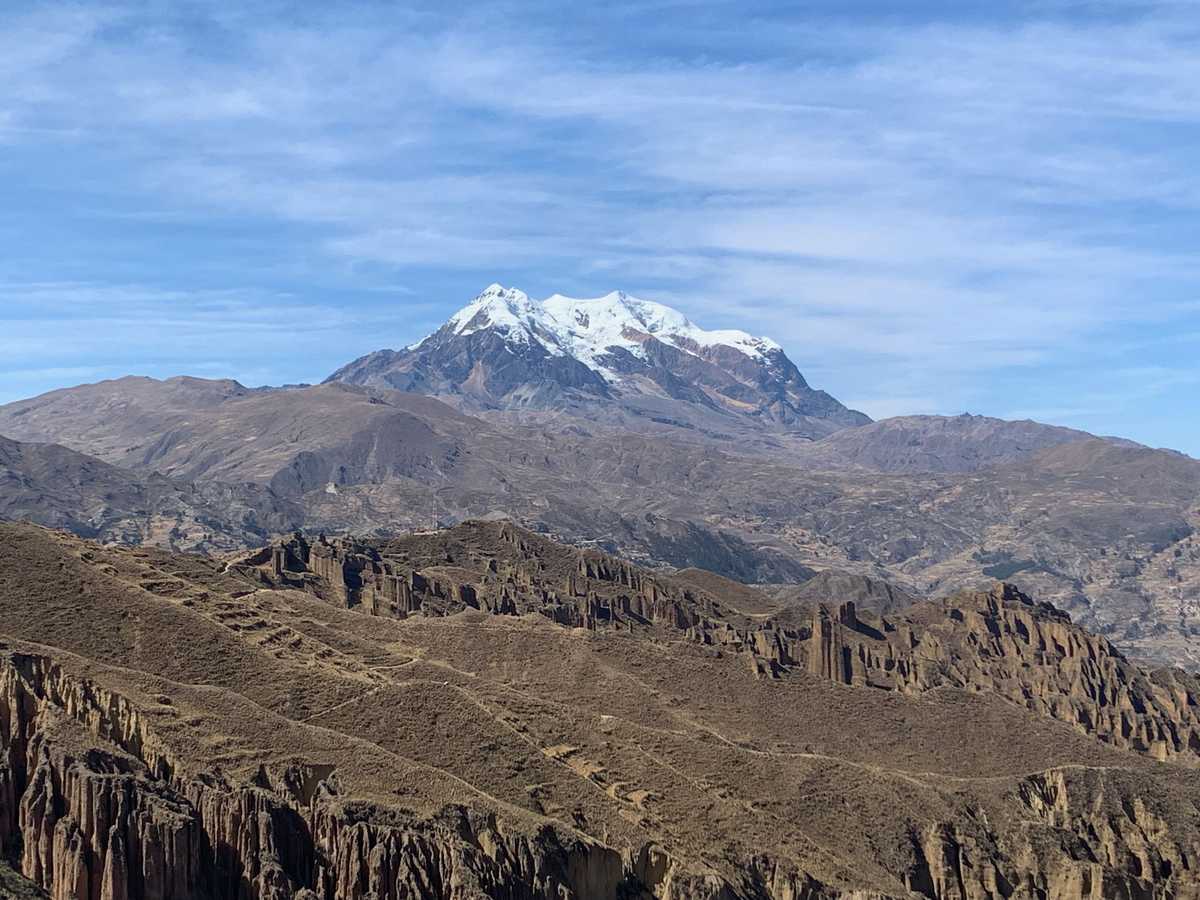
It was an amazing experience. This post will give you an overview of what it was like and how to be successful if you also feel inclined to attempt it.
Why Illimani?
I got this question a lot. The question itself is the answer. Not a lot of people climb it and for me solitude makes an outdoor adventure more special. Most people seem to choose to do Huayna Potosí instead, which is also over 6,000m but not quite 20,000 ft. So Illimani is higher and offers more solitude but both are good options!
Preparation
The two things you need to do to prepare yourself physically before attempting a high altitude climb are, in declining order of importance, (1) get acclimated to high altitude and (2) get into hiking shape.
It does not matter how in shape or how good of an athlete you are, if you are not acclimated to high altitude you will fail. This means wasting a lot of time and money and possibly also ruining your climbing partners' trips if you are sharing a guide and you all have to turn around because you can't continue. Furthermore, at Illimani levels of altitude you are putting your body under enormous stress and death is a real possibility.
I had a decent baseline as I was living in Denver at the time and doing a lot of mountain biking and hiking between 6,000 and 14,000 ft. I started this trip by flying to Mexico City (7,300 ft) and spending a few days there before going on to Peru and doing the epic 8-day Huayhuash circuit which involves 10-16 miles per day of very arduous hiking between 12,000 and 16,000 ft. I then recovered for a few days at Lake Titicaca (12,500 ft) before heading to La Paz and meeting up with my friends and climbing partners, Victor and John, who had just flown in from Denver. Together we then did 17,690 ft Charquini, which itself is a beautiful and highly recommendable climb.
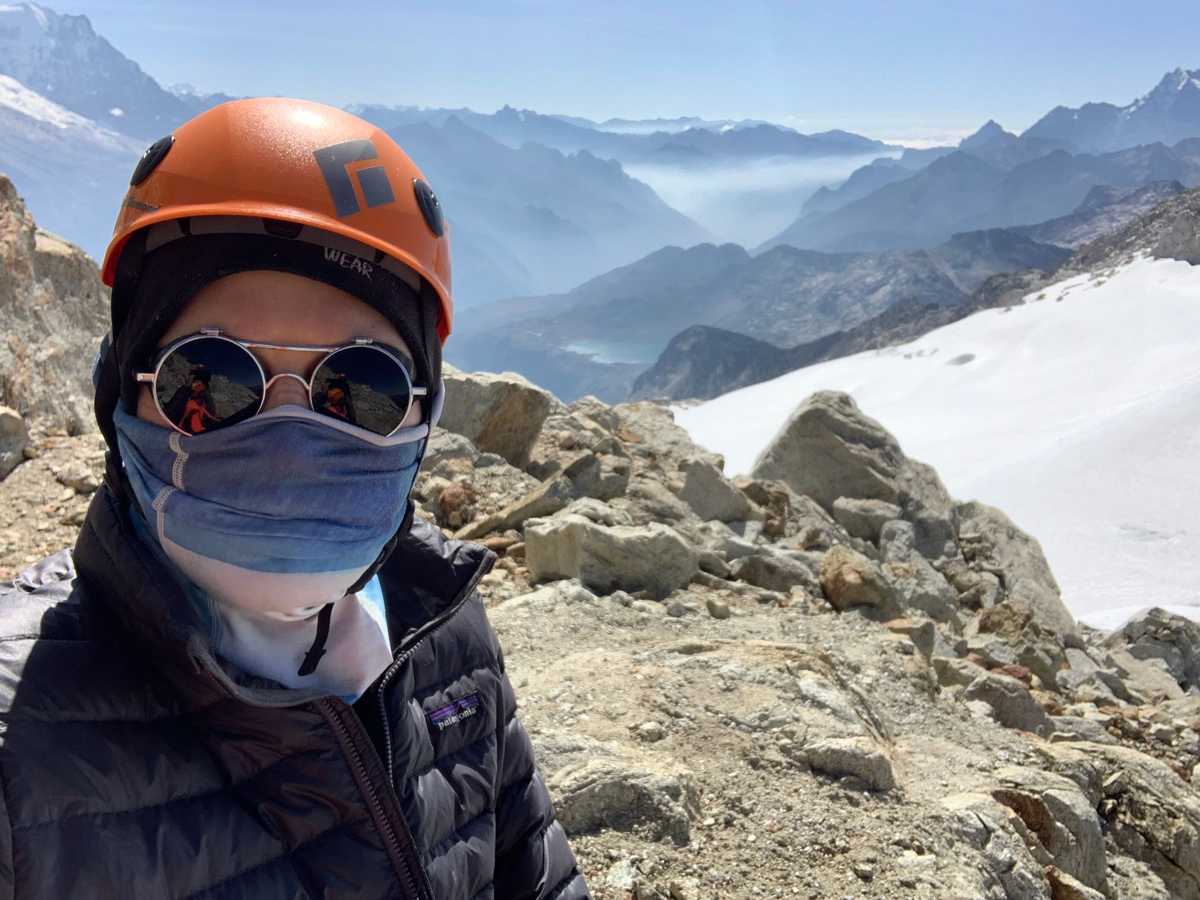
So in total, before starting the Illimani climb, I had spent more than 2 weeks above 7,000 ft, and at least half of that above 12,000 ft, with several forays to between 16,000 and 17,690 ft. This was decent but I felt like I was 90% to where I should have been before attempting a 21,000+ ft peak. I should have added Huayna Potosí which is next to Charquini and just a hair under 20,000 ft, but alas we ran out of time.
Also, get into hiking-specific shape. Being in shape for other cardio-intensive sports will help but it's not the same.
Doing the necessary physical preparation will not only ensure that you survive and don't waste your time. The more prepared you are the more you will enjoy the experience.
Gear
You will be making your summit push before sunrise and temperatures get extremely low. I don't know how cold it was exactly, but based on what I was wearing and how cold I felt, I would say -15 F. It got much, much warmer on the descent, once the equatorial sun had risen. I had to shed many layers.
Assuming you are flying to La Paz, your capacity for bringing gear will be limited. Almost everything you need is available for hire or purchase in La Paz and usually included if you hire a guide. However, I would bring the following things since they are small and expensive / impossible to rent in La Paz:
- Glacier sunglasses (for while you're on the snow)
- Polarized sunglasses (for all other times)
- Light down jacket. Your guide will provide a thicker down jacket and a shell to go on top of this.
- Mountaineering socks
- Base layer
- Maybe: Your own worn-in mountaineering boots (these are expensive and your guide can provide them, but it's a much nicer experience to use your own, worn-in shoes. Blisters will ruin the experience. If you know you are not prone to blisters, using the guide's boots is fine).
- Lip balm with SPF
- High SPF broad spectrum sunscreen. Very high altitude + near the equator = pretty much the most intense sun you can experience.
- Sweatpants
- Neck Gaiter
- Windproof beanie
- Hiking backpack
Make sure your guide provides the following:
- High-density down jacket
- Outer shell jacket
- Windproof mountaineering pants
- Crampons
- Gaiters
- Ropes, carabiners, harness, etc
- Helmet
- Ice axe
- First aid kit
- Mittens with liners
- Mountaineering tent
- Sleeping bag with very low temperature rating
- Food
- Honestly there is a lot more, which is why it's important to hire a good guide, or to know what you are doing.
Guide
We used Juancho and Julio from Altitud6000. A recent Google search did not turn up much for them, but if you are able to track them down, I can recommend them. They were certified mountain guides and seemed to have plenty of experience. They do, however, only speak Spanish. The service included transportation to and from basecamp (about 5 hours each way), all meals cooked by a chef, porters to take everything up to high camp, and all the mountaineering and camping gear.
We paid them about $500 per person which seemed quite a bit cheaper than other companies. Western companies in particular are an order of magnitude more expensive than this, and I don't see how they could be significantly better.
The Climb
Day One: Base camp
The guides picked us up from our hotel and after escaping the insane La Paz traffic, we wound our way through the dry hills east of the city. Illimani made the occasional appearance, each time larger than before. About an hour from our destination we stopped in a small town to pay an entrance fee and to buy a mandatory poop container (which thankfully I did not have to use). The local authorities seem to be doing a good job of preserving their mountains. Both Charquini and Illimani were in great shape with no signs of human waste and very little trash.
After arriving at basecamp, we set up our tents, did a quick safety course, and a short sunset hike to the top of a nearby plateau.
While this was happening, the chef (Juancho's girlfriend) was preparing dinner. The temperature began plummeting with the sun now completely gone. We all gathered in the dining tent and Juancho told us stories from his many years of guiding, including how he had once traversed all four peaks of Illimani (see the first photo in this post). We then called it an early night.
Day Two: High camp
We began at a reasonable hour. The porters had arrived from the town where we had bought the poop containers. They included a 70-year-old man, two 16-year-old girls who would not stop giggling the entire trip, and two younger men who did most of the work. And in contrast to our expensive high-end gear, they wore tennis shoes or rubber boots. Instead of backpacks they used blankets fastened with a knot.
It was sunny and warm as we ascended a fairly easy, switch-backed trail which turned into loose sand and then into a pretty challenging, very long rock scramble.

Finally, at around 18,000 ft, we reached our high camp, Nido de Condores (Condors' Nest). I would estimate we had climbed about 3,500 ft in roughly 5 hours.
The spot was beautiful but rather inhospitable on a very exposed ledge at the foot of the glacier, with nonstop freezing wind. We spent the first hour gathering rocks to tie down the tents and to build a wind barrier for the stove.
Then there was nothing to do except eat, drink as much tea as possible, and try to fall asleep, which proved quite difficult as the cold became extreme as night fell.
Day Three: Summit day

After managing a couple hours of sleep, I was awoken around midnight and told to get moving. It was so cold outside of my sleeping bag that although I am writing this almost two years later, I can still feel the dread at the prospect of leaving that sleeping bag to fumble around for the rest of my clothes.
Fortunately the wind had stopped and after suiting up, we put on our crampons and began climbing the glacier into a clear but very cold night.
Julio and I were roped up and Victor and John were with Juancho. We got a head start, but because I had been the slowest climber on Charquini, I expected the other group to catch up to us in no time. Instead, to my surprise, the lights from their headlamps seem to fall further and further behind. It was obvious something was wrong and sure enough there eventually came a yell for us to stop and wait for them.
Standing on steep ice, shivering because I was no longer producing body heat was super fun. Finally they reached us. John had hit the wall and decided he could no longer continue. Impressively, he had summoned the strength to climb the last very long and steep pitch up to where I was, otherwise he would have forced Victor to turn around with him. Julio and I added Victor to our rope and continued our ascent as John and Juancho descended back to high camp.
After a short while, we reached a small plateau which gave us some much needed rest. The sun then began to rise and revealed just how much we had left. I had felt surprisingly strong up to this point but seeing what I thought was the summit still so far above us was the crack in my mental fortitude that allowed the fatigue to begin setting in. Julio then informed us that it was a false summit we were seeing. My spirit was crushed. My pace began slowing dramatically and my requests for descansos became more and more frequent. Every step became difficult. I started to develop a dry cough.

I felt the rope behind me tighten. Victor was completely exhausted too and taking unannounced breaks. He had a far off look on his face and was muttering things in Spanish.

Julio was starting to get concerned and told us to keep moving and that it wasn't too far to go. The true summit was in sight now. We put our heads down and climbed the last short pitch onto a ridge, and then a 50 yard flat traverse, a victory amble, to the summit.
Logramos! yelled Julio. We had done it. Victor immediately collapsed and actually began snoring. After his nap, we took photos and refueled with snacks while enjoying the view. Though it is not a volcano, Illimani seems like it with its massive prominence commanding an airplane-like view over the surrounding area.
We then began our descent. The temperature skyrocketed as the sun got higher and I had to take most of my layers off. The snow became slushy and we were able to do a lot of glissading which was fun and got us down in no time.
We approached our high camp waving our ice axes in celebration. The porters, who had climbed up from basecamp again that morning, and now included two 12-year-old boys, took photos of the crazy gringos. I collapsed in my tent and took a nap.
We then climbed all the way down to basecamp and drove back to La Paz. I don't remember much of that drive!
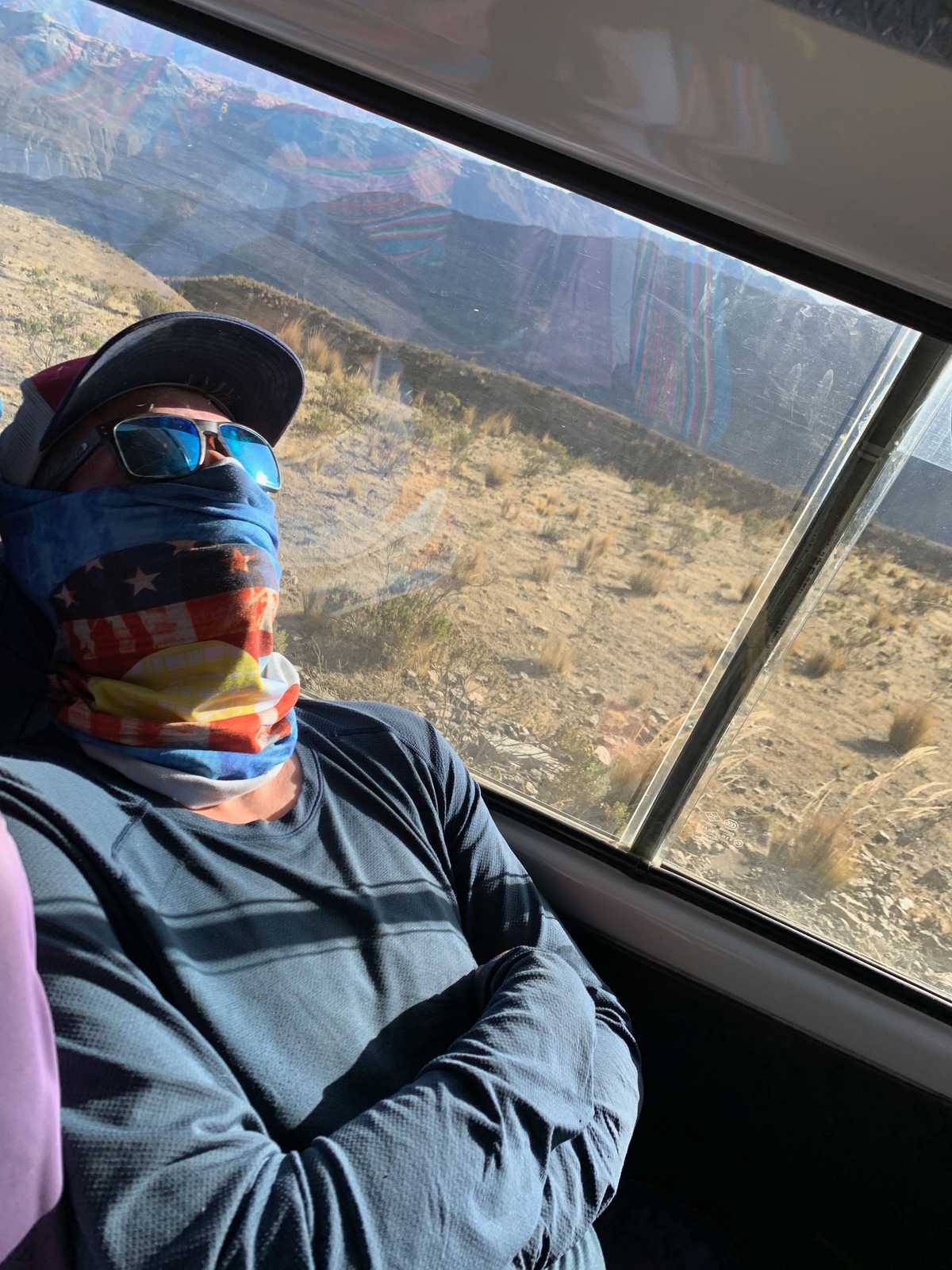
We celebrated with some local fine dining, which gave me food poisoning, and I spent the next two days holed up in a La Paz hotel room, recovering from both the climb and also puking my guts out.

If anyone is need of an extreme weight loss program, I can highly recommend the Bolivian mountaineering and food poisoning regimen. I looked like a POW afterwards.


